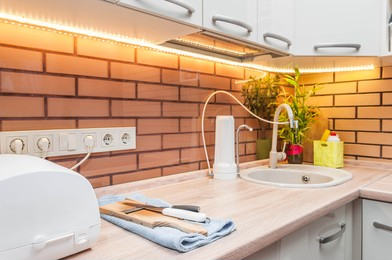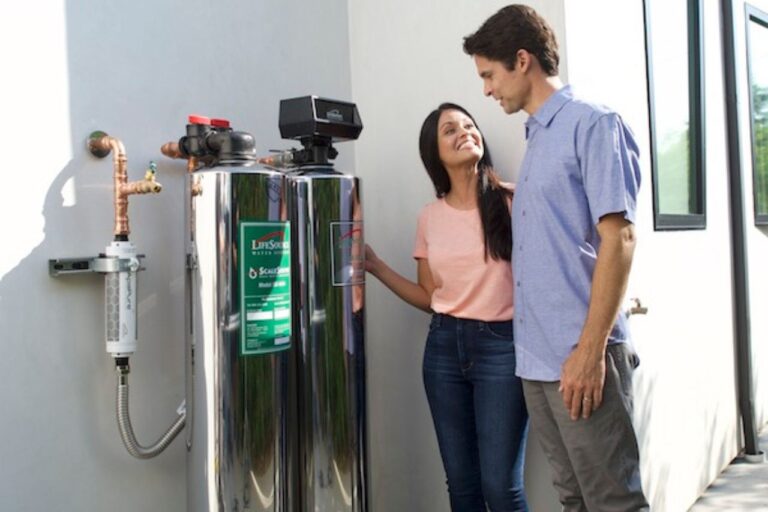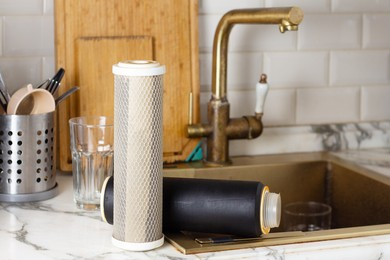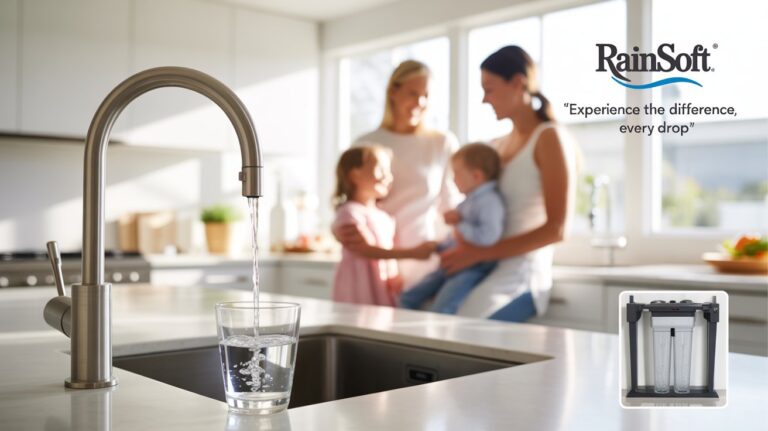How Often To Change Home Water Filter
Keeping your home water filter changed regularly is key to ensuring that you and your family are always getting clean and safe drinking water. Learn how often to change a home water filter, what kind of filter you should get, and DIY tips for changing it out!
Understand Basic Types of Water Filters
There are two main types of water filters – reverse osmosis systems and carbon block filters. Reverse Osmosis filters have a membrane that removes bacteria, sediment, and other contaminants from drinking water. Carbon block systems consist of activated charcoal, which absorbs larger particles such as chemicals and dirt for a finer filtration process than traditional sediment filters provide. Understanding the type of filter system, you need is important in making sure you purchase the correct filter for your purposes.
Research Filter Replacement Timing and Mechanics
No matter the type of water filter you have, it’s important to know when and how to replace your filter. Most types of filters need to be replaced every six months, or whenever you detect a significant decrease in water pressure from your system. Additionally, examining your manual and understanding the proper way to remove and install a new filter is critical for maintaining effective filtration functions.
Know Your System’s Minimum/Maximum Flow Requirements
Make sure to know what your system’s exact flow rate is – the amount of water that needs to pass through the filter each minute. This information can be found in your owner’s manual, so make sure you reference this before removing and replacing your filter. Additionally, make sure you check to see if there’s a minimum or maximum flow requirement for your system. A maximum flow rate is important to note – any attempts to push more water through the filter than indicated could potentially damage the housing due to extreme pressure levels.
Minimize Installation Errors by Following Instructions Closely
It’s important to read and follow the manufacturer’s instructions closely when replacing your filter. Errors in installation, such as leaving out o-rings or making incorrect connections can have disastrous effects, causing extreme pressure levels that could damage the system and create a health hazard, allowing contaminants to pass through unchecked. Additionally, be aware of any potential hazards associated with the context in which you are working – wearing protective gear isa good way to keep yourself safe from cut edges, chemicals, or debris.
Monitor Water Quality Regularly to Ensure the Best Results
Installing a water filter in your home is just one step in ensuring clean drinking water. Regular monitoring of water quality should also be done to make sure the system is working optimally and that you’re getting the freshest, cleanest water possible. Try inspecting all incoming sources of your water on a regular basis to identify any potential problems – a periodic professional inspection every year may help identify larger issues before they become more serious. Additionally, a great way to stay up-to-date on the condition of your water filter, is by taking samples for analysis and testing – this can help show any potential contaminants or bacteria, and give you valuable insights into whether your filter is really doing the job it was designed to do.







